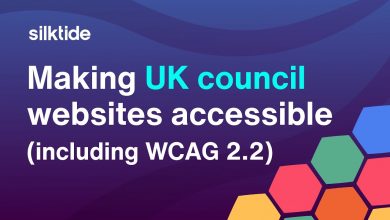Accessibility Requirements for UK Government Web Sites
These regulations mandate compliance with the Web Content Accessibility Guidelines (WCAG) 2.1 at Level AA, an international standard that ensures digital content is perceivable, operable, understandable, and robust.
 UK government organizations are legally required to ensure their websites and mobile applications are accessible to all users, including those with disabilities.
UK government organizations are legally required to ensure their websites and mobile applications are accessible to all users, including those with disabilities.
This is under the Accessibility Regulations 2018, which incorporate the EU Web Accessibility Directive (Directive 2016/2102).
These regulations mandate compliance with the Web Content Accessibility Guidelines (WCAG) 2.1 at Level AA, an international standard that ensures digital content is perceivable, operable, understandable, and robust.
This means content must be presented in ways users can perceive, such as providing text alternatives for images or captions for videos, and interfaces must be navigable via keyboard, with clear and consistent navigation, readable text, and compatibility with assistive technologies like screen readers.
Web Site Compliance
The regulations apply to public sector bodies, including central government, local authorities, NHS organizations, and other publicly funded entities, covering all public-facing websites, intranets, extranets, and mobile apps published or significantly updated after September 23, 2018.
New websites had to comply by September 23, 2019, existing websites by September 23, 2020, and mobile apps by June 23, 2021. Certain content, such as archived materials, pre-recorded media published before September 23, 2020, or third-party content not controlled by the organization, may be exempt, but accessible alternatives must be provided where necessary.
Every public sector website and app must include an accessibility statement that outlines its compliance status, details any known accessibility issues, explains how users can report problems or request alternative formats, and provides contact information for feedback or complaints.
The statement must also reference enforcement procedures, such as escalation to the Equality and Human Rights Commission (EHRC) or the Equality Commission for Northern Ireland, and be regularly updated to reflect changes in accessibility compliance.
Organizations are expected to make reasonable adjustments to meet these standards unless doing so would impose a disproportionate burden, such as excessive cost or effort relative to their resources.
If a disproportionate burden is claimed, it must be justified through an assessment documented in the accessibility statement. Compliance requires regular testing, using automated tools, manual checks, and user testing with people with disabilities, to ensure ongoing adherence to WCAG 2.1 Level AA.
Government Digital Service
The Government Digital Service (GDS) monitors compliance, while the EHRC enforces the regulations, with the power to investigate non-compliance, which could lead to legal action or reputational damage. Staff involved in creating or managing digital content must be trained to understand and implement accessibility standards, and organizations should promote awareness of these requirements across their teams.
Practical steps include ensuring websites support assistive technologies, structuring content for easy navigation with proper headings and alt text for images, and making documents like PDFs created after September 23, 2018, accessible through proper tagging. For further guidance, organizations can consult GOV.UK resources or the Central Digital and Data Office (CDDO), which provides tools like accessibility testing frameworks.




